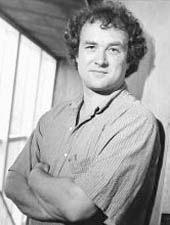Yang, Q., Tonks, N. K. (July 1991) Isolation of a cDNA clone encoding a human protein-tyrosine phosphatase with homology to the cytoskeletal-associated proteins band 4.1, ezrin, and talin. Proceedings of the National Academy of Sciences of the United States of America, 88 (14). pp. 5949-5953. ISSN 0027-8424
Preview |
PDF
Tonks_PNAS_1991Isolation.pdf - Published Version Download (1MB) | Preview |
Abstract
The polymerase chain reaction (PCR), from primers corresponding to conserved sequences within the catalytic domains of the protein-tyrosine phosphatases, was used to amplify protein-tyrosine phosphatase-related cDNAs from a HeLa cell library. After probing the same cDNA library with one of the PCR products, 10 positive clones were identified. The longest of these clones (3984 base pairs) contained 2739 base pairs of open reading frame and, after a stop codon, a 3' nontranslated segment of 1222 base pairs. A 4.3-kilobase transcript was detected by Northern blot analysis of HeLa cell poly(A)+ RNA. The open reading frame predicts a protein of 913 amino acids (almost-equal-to 104 kDa), termed PTPH1. The sequence of PTPH1 can be described in terms of three segments. (i) The N-terminal segment displays homology to the domains in the cytoskeletal-associated proteins band 4.1, ezrin, and talin that direct their association with proteins at the interface between the plasma membrane and the cytoskeleton in structures such as focal adhesions. (ii) There is a central segment bearing putative phosphorylation sites for protein-serine/threonine kinases. (iii) A segment that is homologous to the members of the protein-tyrosine phosphatase family is located at the C terminus. The structure is discussed in the light of the potential role of PTPH1 in controlling cytoskeletal integrity and the possibility that overexpression of PTPH1 may reverse transformation induced by oncogenic protein-tyrosine kinases, such as the members of the src family.
Actions (login required)
 |
Administrator's edit/view item |

